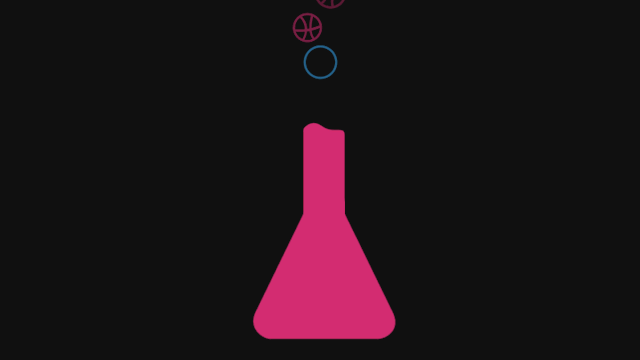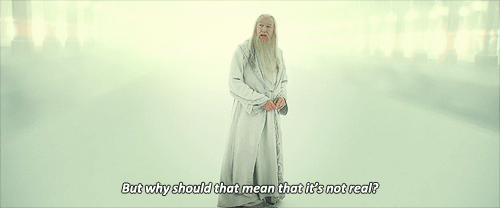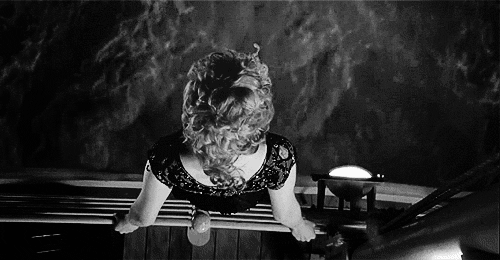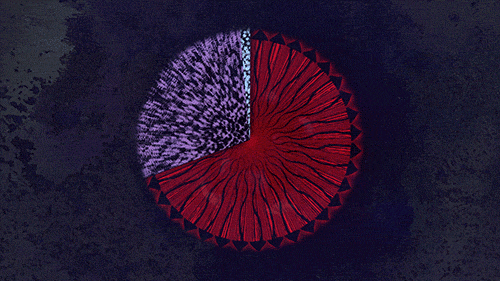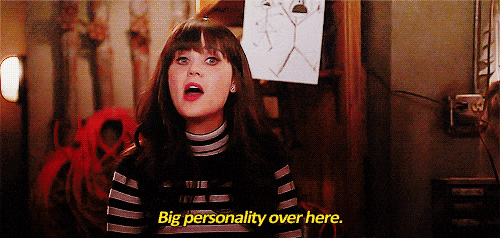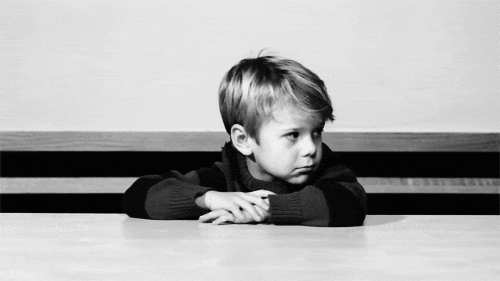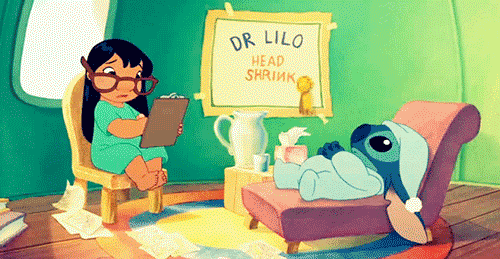American author and psychotherapist Richard Carlson once said, “Stress is nothing more than a socially acceptable form of mental illness.” If anything, it is probably the only socially acceptable form of mental illness. It is quite saddening to see that there is this incredibly negative stigma surrounding mental illness and those afflicted by it. But it doesn’t have to be this way. The contempt society has for mental illness is bred only by misinformation; by informing the public, we can give the mentally ill a better healing process.
1. Mental illness cannot be defined.
There are many people, including experts in the psychology field, who feel they cannot accurately define what mental illness is. This only holds a grain of truth. While it is often difficult to diagnose a mental illness as one can only go about observing symptoms, mental illness is simply a disease of the brain. According to the Mental Health Association in Forsyth County, it “causes mild to severe disturbances in thought and/or behaviour, resulting in an inability to cope with life’s ordinary demands and routines.” There are currently more than 200 classified forms of mental illness.
2. Mental illness is just like any other medical disease.
Well, yes and no. There’s a reason the various forms of mental illness are called “disorders,” not “disease.” While the denotations of the words are relatively similar, their connotations are not. In fact, in Dorland’s medical dictionary, their definitions are not clearly differentiated. Disease is defined as “a definite pathological process having a characteristic set of signs and symptoms,” while disorder is defined as “a derangement or abnormality of function; a morbid physical or mental state.” Those who do recognise a distinction between the two terms often describe a disease as due to extrinsic factors and a disorder is due to intrinsic abnormalities. So far, so true. Despite mental illness being essentially a brain disease, many scientists still don’t know what causes it exactly. According to Psych Central founder Dr John Grohol, “of the hundreds of research studies done on the brain and the brain’s neurochemistry, not a single one has implicated a single source or cause of any mental disorder.” Long story short, it’s far more complicated than the average individual may know.
3. Mental illness is always a result of chemical imbalances in the brain.
While mental illness is often caused by brain chemical imbalances, there are many other factors that come into play. According to Grohol, “many mental health experts believe in the ‘bio-psycho-social’ model of mental disorders.” This means there are various, associated constituents of most mental illnesses that comprise of three divergent yet interconnected domains: (1) the biological and our genetics; (2) the psychological and our personalities; and (3) the social and our environment. This trio seem to play a significant role in most developments of a mental disorder.
4. Mental illness can only be helped through medication.
For decades, psychiatric medications have been prescribed; they have proven to be generally safe and effect in the treatment of most common mental disorders. However, rarely are medications the only treatment option most people stop at. True, taking a pill a day is the easiest treatment option, but a pill can only do so much. This is because mental illness is not like any other ordinal medical illness (see Myth #2). Other treatments such as support groups, psychotherapy, self-help books, and more should always be considered by essentially anyone diagnosed with a mental illness. While medications are frequently offered as the primary solution, it should best be viewed as a method to help any diagnosed individual get a jumpstart in their treatment efforts.
5. Mental illness is a relatively new discovery.
Throughout the existence of humankind, the infinitely diverse personalities of human beings have fascinated both fellow members of society and scientists. Of particular interest has been what occurs when an individual’s mind turns against them and what can be done, if anything at all, to reverse this tragic incident. Mental illness has been around since the dawn of humankind. Its existence parallels to that of written, medical accounts. As a matter of fact, Greek physician Hippocrates first began treating mental illness as physical disease in 400 B.C. Attempt to treat mental illness date back as early as 5000 B.C.E. as evidenced by the discovery of trephined skulls in regions that were home to ancient world cultures. Early humans widely believed mental illness was the result of supernatural phenomena because they could not see physical evidence of it; therefore they responded with equally mystical, and sometimes brutal, treatments. Although it has taken quite a while for medicine to finally be able to reliably diagnose many mental illnesses, modern medicine now clearly defines mental disorders as illnesses and that part of their origin is genetic and biological.
6. Mentally ill individuals are inherently violent and unpredictable.
There are so many unnecessary fears of mental illness due to the stigma that surrounds it claiming it is a cause of unpredictable violence. We’re always so quick to play the mental illness card when some perpetrator commits an act of mass violence without looking into other factors that come into play. While many believe there is a link between the two, a study by Northwestern University found that most mentally illnesses aren’t predictors of violence. The only exception is a substance abuse disorder. Only 3-5 percent of all violent acts can be attributed to individuals with a serious mental illness and substance abuse tends to play a part in these acts. In fact, people with severe mental illnesses are over 10 times more likely to be victims of violent crime than the general population. But why, in the first place, do people believe there is a link between mental illness and violence? Well, people often fear what they don’t know or understand; because most are not familiar with mental illness, they turn to mass media in order to familiarise themselves with it. Unfortunately, the media often sensationalises mental illness. As an unspoken rule, a person with mental illness is often portrayed as an antagonist who cannot be treated, is violent simply for violence’s sake, and needs to be institutionalised. When this is the only portrayal that exists, can anyone blame others for being afraid?
7. Because there are no definitive brain scans used for diagnosis, mental illness is not real.
Each disease and disorder has its own type of evidence. Many years ago, people hypothesised common pestilences were supernatural occurrences, but today, we have proof which says otherwise. Medicine is a living branch of science. It constantly needs updating and staying consistent with society as time goes by. This knowledge has led us to many great discoveries and cures for illnesses such as smallpox and polio. Mental illness has yet to reach its peak of discovery like the aforementioned diseases. Research on the brain is still in its infancy. Just because there is not much cold, hard proof of it does not mean that it does not exist. We need to give it time. However, there is much biological evidence pertaining to the existence of mental illness. Mental illness isn’t just real because they are diagnosable or because victims can feel them; they’re also real because we can actually see changes in the brain. While there is no definitive brain scan used for diagnosis, we are heading in this direction tanks to this type of evidence.
8. All mentally ill individuals are suicidal.
While the majority of individuals suffering from some form of depression are suicidal, this doesn’t mean all of them are depressed. And there are a plethora of mental illnesses besides depression that may not lead the victim to suicide ideation, such as autism or ADHD. The great majority of people who experience a mental illness do not die by suicide. People who are suffering from a mental illness such as schizophrenia or clinical depression do have significantly higher suicide rates than average, although they are still in the minority of attempters.
9. All suicidal individuals are mentally ill.
While the phrasing of this myth is similar to the one above, they both have opposite meanings. Having suicidal thoughts does not imply one is necessarily mentally ill. People who idealise suicide are often acutely distressed and the vast majority are depressed to some extent. However, this depression may either be a reactive depression (which is an entirely normal reaction to difficult circumstances) or an endogenous depression (which is the result of a diagnosable mental illness with other underlying causes) It may also be a combination of the two.
10. Mental illness rarely happens.
Mental health problems are actually quite common. According to MentalHealth.gov, one in five American adults have experienced a mental health issue; one in 10 young adults have experienced a period of major depression; and one in 25 Americans have lived with a serious mental illness, such as schizophrenia, bipolar disorder, or major depression.
11. You can tell right away if someone is mentally ill.
Because mental illness is more common than the average person thinks, they most likely have had encountered a mentally ill person without realising. Symptoms of mental illness are invisible and it may take a traumatic event for them to be revealed. Most individuals with mental illness are high-functioning and can easily blend in with neurotypicals, thereby effortlessly disguising their mental illness.
12. Mental illness is caused by a personality weakness or character flaw.
According to “The History of Mental Illness” by Natasha Tracy, “it was once thought that mental illness was due to anger from the gods, then it was thought to be demonic possession and after that witchcraft.” Another idea just as outmoded and outdates is the idea that mental illness stems from personal weaknesses. The roots of mental illness is not understood by science and medicine to be genetic, physical, and environmental; personality and strength as nothing to do with it. Anyone can have a mental illness – mental illness does not discriminate.
13. Antidepressants are just happy pills; they don’t actually do anything.
Trust me, they do. Antidepressants don’t just make you “happy.” According to WebMD.com, they “work by balancing chemicals in your brain called neurotransmitters that affect mood and emotions.” They are able to “help improve your mood, help you sleep better, and increase your appetite and concentration.” They don’t work right away; they take effect over time. In addition, according to Psychology Today, “integrative medicine also offers many substitutes to medication which may be better first-line treatment for mild or moderate depression.”
14. Children don’t experience mental health problems.
Many people think of childhood as a carefree time and can’t imagine any child suffering from a mental health challenge; however, children do experience mental health problems and illnesses. These mental health problems can be a product of the interaction of biological, psychological, and social factors. Half of all mental health disorders appear before the age of 14 and ¾ of mental health disorders occur before the age of 24. In rare cases, even children younger than 12 can suffer from mental illness. There is a whole category in the official diagnostic manual of mental disorders for children’s mental disorders, some of which are well-known, diagnosed, and treated, such as attention deficit disorder (ADHD) and autism. But in the past decade or so, some researchers and professionals are suggesting that many adult mental disorders are also possibly found (and perhaps even widespread) in children. This mental illness myth causes great damage to young people as less than 20% of all children and adolescents with a mental health problem get diagnosed and treated, which is unfortunate as early mental health support can help a child before problems interfere with other developmental needs.
15. Designed only to sell drugs or psychotherapy to the public, mental illness itself is a myth based upon arbitrary societal definitions.
This is one of the most difficult myths to challenge because there is some truth to it. Much of how we define mental illness today is based upon definitions we humans created while observing sets of symptoms that seemed to cluster together when people presented with certain concerns. People’s suffering is no myth, but arriving at how we understand that suffering and then helping the person through it is open to a wide range of interpretations and options. The most common method in science is to identify similar groupings of symptoms, give them a label, and then discover what kinds of interventions work best in helping a person feel relieved of those symptoms. Some of this is steeped in rigorous scientific method, but some of it feels (and perhaps is) more arbitrary and political. Mental illness is no myth, but some of our definitions could be a lot better and more discrete. And, for the record, defining mental illness came long before the practical, modern profession of psychotherapy and pharmaceutical companies.
16. If it’s serious, it can’t hurt you.
Some individuals hold the belief that mental illness is really just about “crazy people”, such as those with schizophrenia who hear voices in their heads all the time. However, mental disorders encompass a wide range of problems in life, including being depressed for no reason for weeks at a time (depression) or being unable to concentrate on any single task for more than a few minutes at a time (ADHD). A mental disorder doesn’t have to be life-threatening or make you unemployed and homeless in order to have a serious impact on your life. Even mild depression, left untreated for years, can turn into a chronic condition that significantly could impact your quality of life and your relationships.
17. Psychology and psychiatry aren’t “real sciences.” They’re supported only by fuzzy research and contradictory findings.
Research into mental illness tries to understand where it comes from and what treatments are most effective in helping people cope. Psychological research dates back more than a century, starting around the same time that modern research began in medicine and our better understanding the human body. Its rich history and scientific methods are far more complex than the simple, popular image of Sigmund Freud sitting in his office listening to patients as they lie on a couch. Some who argue this point come from different scientific backgrounds and use different yardsticks from those fields to try and “measure” psychology, psychiatry, and the neurosciences by. Unfortunately, that’s like comparing apples to oranges and then coming away upset that because they taste so different from one another, these two couldn’t possibly both be fruits. Psychology and its related sciences are indeed “real science,” using well-accepted scientific methods and methodologies that have been time-tested and that produce real, verifiable, and actionable results.
18. Therapists don’t care about you – they only pretend to care because you pay them.
This is a thought that goes through many people’s heads, whether they’re just starting therapy for the first time or they’ve been in therapy for years. The psychotherapy relationship is an odd one, not quite replicated anywhere else in society. It is a professional relationship that will be emotionally intimate, a characteristic most people don’t have much experience with. The vast majority of therapists, however, don’t go into the psychotherapy profession for the money (because it is one of the poorest paying professions one can be in). Most therapists get into the profession much for the same reason as most doctors or teachers do – they see it as a calling: “People are in need of help and I can help them.” Although it may not seem like that when you’re on the other side of the couch, most psychotherapists do therapy because they genuinely enjoy helping others work through life’s tough problems.
If you have a mental illness or think you may have a mental illness, please contact your nearest psychologist or psychiatric hospital for a proper diagnosis and/or treatment. If you live in the United States, find your local NAMI by calling the helpline 800-950-NAMI or emailing the organisation at info@nami.org. The two services are open Mondays through Fridays, from 10 a.m. to 6 p.m. Eastern Standard Time.






